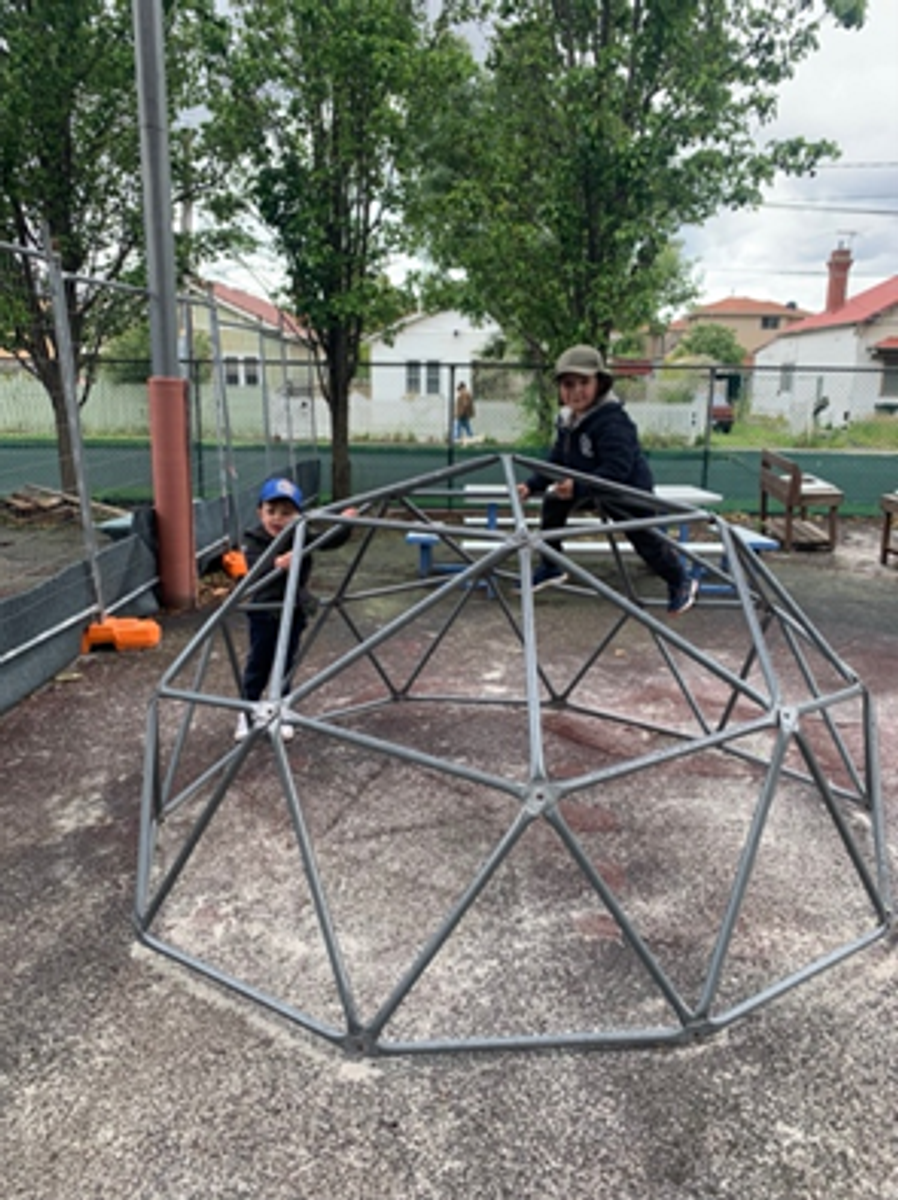GEKA Sacred Heart

Intentional Teaching
By Gurmeet Kaur and Leana Kim
Risky play is a natural part of children’s play at kindergarten. It provides opportunities for challenge and the exploration of boundaries. At GEKA Sacred Heart Kindergarten, children engage in many play opportunities where they are challenged to take risks with their learning.
When we talk about risky play we often think of the outdoor space. Climbing trees, jumping off high boards, balancing at greater heights. Being a new service, our playground is still evolving so it has been our role as educators to intentionally create some “risks” for children.
Placing a ladder against a fence so children can see what is on the other side, playing with sticks, using the PMP equipment from the Prep classroom are all ways in which we have created these opportunities for our children.
Leana made the following observations:
“When the children climb on a simple climbing frame They gain the thrilling feeling of “I can do it!” Children love to play with shovels, toy machinery tools at kindergarten and it helps them to know that a mistake could hurt. Also, children often use water and sometimes they have a small campfire under the supervision of the educators.
At kindergarten, these risky plays give many benefits for children, such as building resilience, persistence, balance, coordination, creativity, inventiveness, curiosity and problem-solving.”
Taking risks and learning from the consequences, good or bad, are a valuable part of learning in early childhood. And there's not a single place on Earth that is completely risk-free. Daily checks of our indoor and outdoor environments, measures like Softfall mats and clear areas to fall around more challenging equipment, and the supervision of educators throughout the day help us support children to take risks safely and in ways that are appropriate to their age and development.
Over the course of the year, we change learning experiences and offer new ones to provide different challenges and to respond to the evolving skill and confidence levels of individual children within our group. It's not always easy to do, but when we step back and observe children, we often find that they are very capable of navigating thoughtfully designed challenging play spaces on their own.
Gurmeet thoughtfully observed the following:
“Navigating risk will be helping children to understand their boundaries and also to understand feeling being afraid and fears they need to listen to keep their body safe.
- GEKA sees each child's uniqueness and believes the most effective way for young children to learn is through a play-based program.
- Through play, children will flourish in their learning and development in a natural, responsive, caring and respectful environment.
- Educators are always close by to provide support and encourage children to take safe and calculated risks.
- Allowing children to take risks will enable children to assess their capabilities and empower them in decision-making.
- As educators, we constantly assess to ensure best practices in allowing children to take risks, such as using scissors or jumping off high up from play equipment. These skills are vital for their learning and development, and educators are always there to support when children need help.
- Children are very good at asking for help, so we need to trust them and let them experience appropriate risks to enhance their learning and development.






